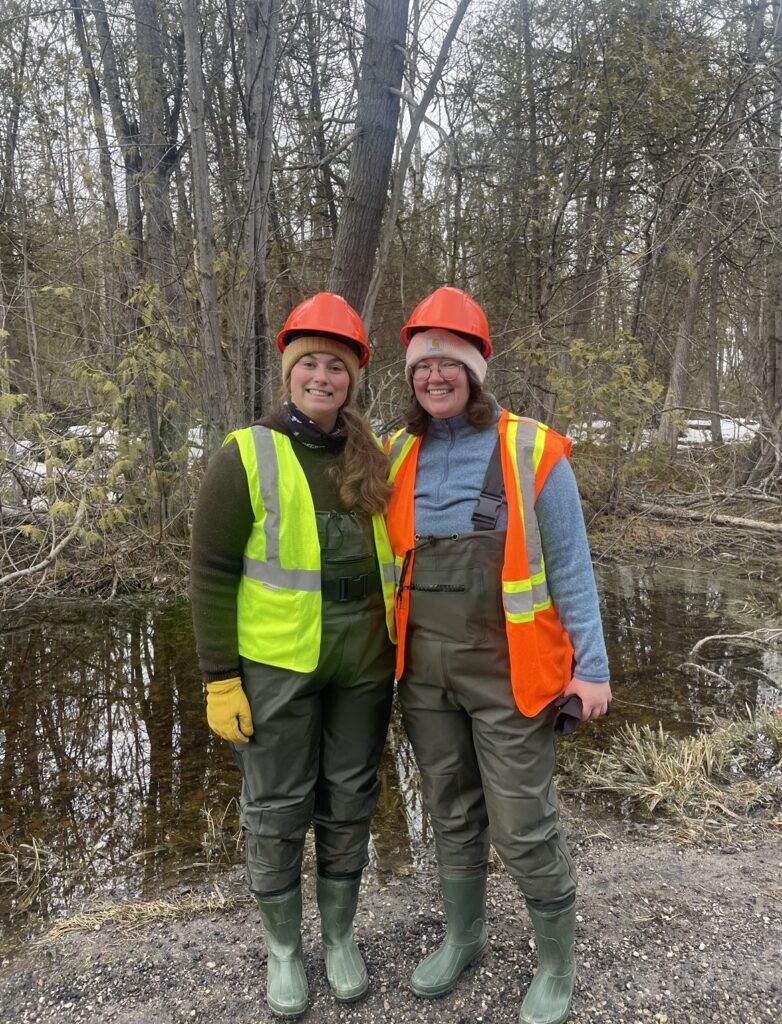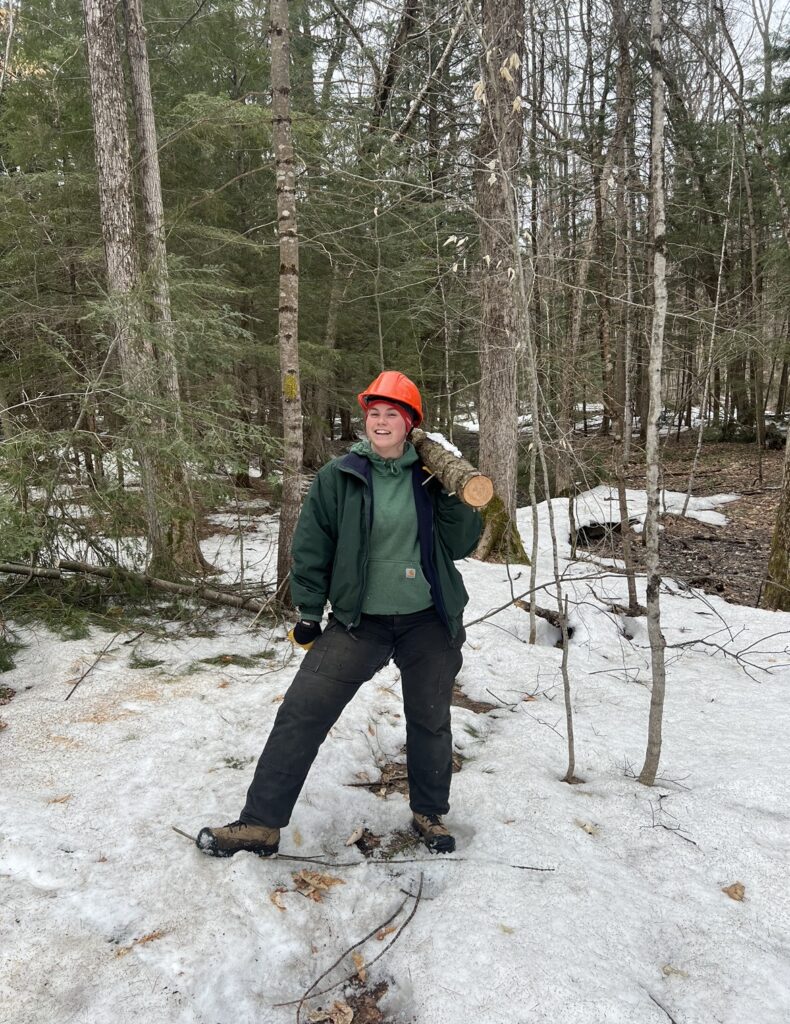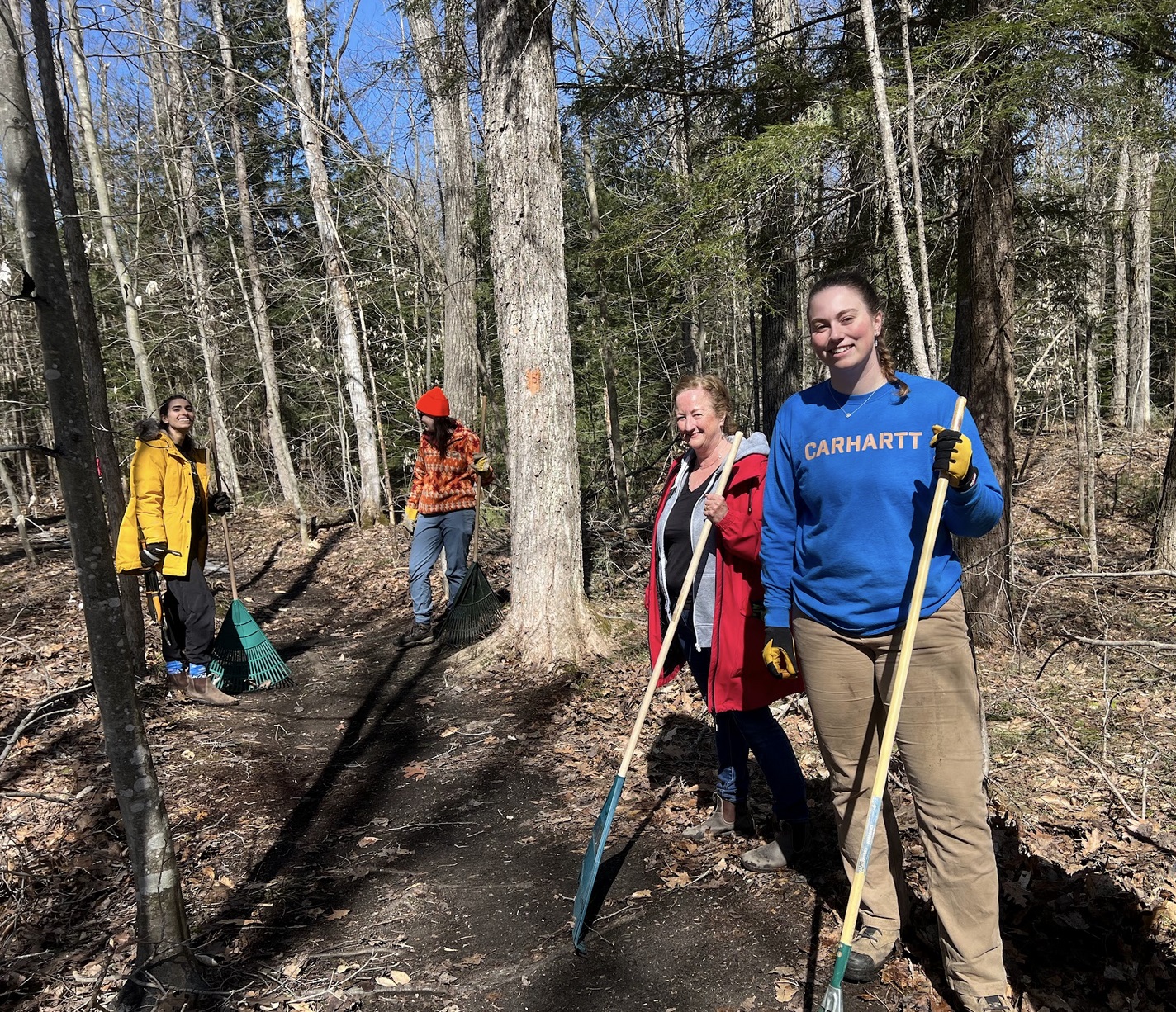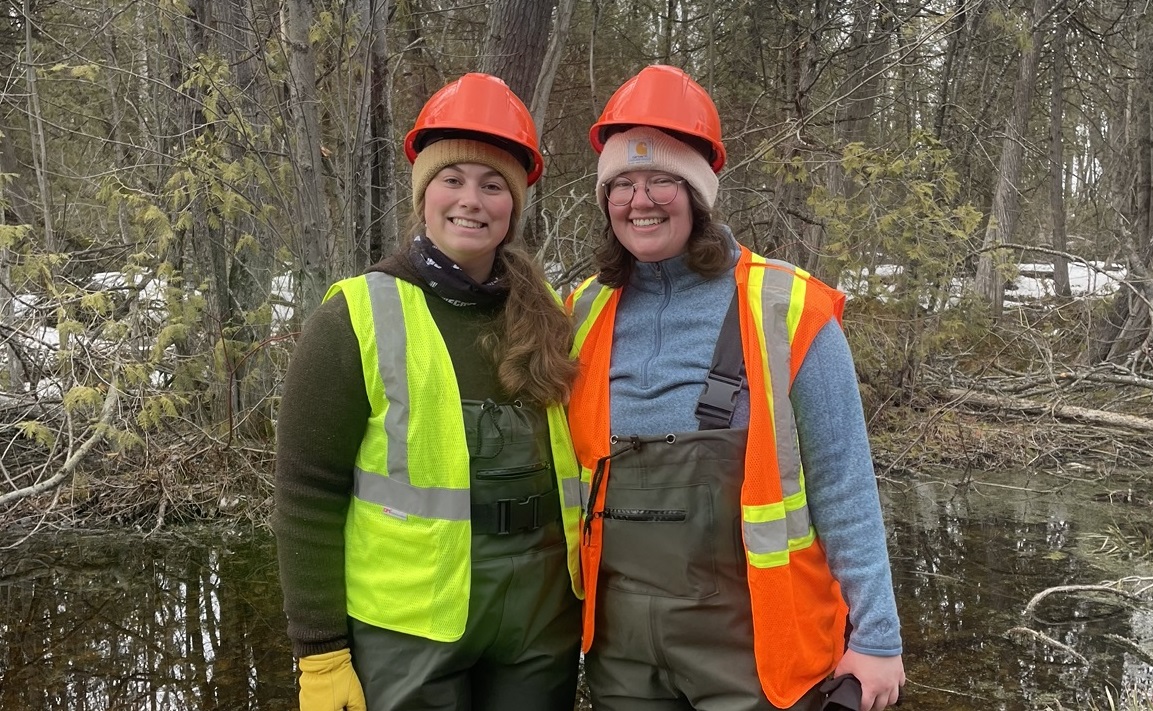Hi! We’re Darian and Ellen, and we’re students in the Ecosystem Management Technician program at Fleming College. This month, we finished up our program with a two-week placement at Couchiching Conservancy.


We started our placement right after the huge ice storm, so our initial itinerary changed to allow us to help with property clean-up. Couchiching protects over 15 000 acres of property, and only has one Reserve Steward, Megan Greenwood. A lot of the stewardship activities are done by volunteers. We got a taste of some the work the land stewards might do: putting up signs to mark trail closures, doing trail maintenance, and checking buildings and fence lines for storm damage. Along the way, we got to see lots of Couchiching’s properties in all sorts of weather, and practice our ID skills with meadowlarks, chorus frogs, and a porcupine.
We also got to practice our data management skills using Landscape, the conservation software that Couchiching uses. Aiesha Aggarwal, Couchiching’s Conservation Analyst, supervised us for the placement, so we learned a lot about the work that goes on behind the scenes to keep sensitive monitoring data organized and secure. We talked about the importance of keeping Species at Risk sightings and locations secret, so that they can remain safe. Couchiching has a variety of monitoring programs that are conducted by volunteers such as Wildlife on Roads, monarch counts, amphibian and reptile monitoring, water quality testing, and even bird and bat monitoring.
Over the course of our two weeks, the monitoring project we participated in the most was daytime frog monitoring. At first, some of the regular monitoring locations had been damaged by the storm. We had to move closer to the road, which was loud and made it difficult to hear calls. But finally at the end of the day we were lucky enough to hear a full chorus of chorus frogs and wood frogs!
Chorus frogs sound like running your fingers over the teeth of a comb, while wood frogs have a quieter, chuckling, duck-like call. They are often heard in flooded fields in early spring. Western Chorus Frogs are classified as a threatened species in Canada, so it was an important piece of data to record, and also special to hear so many of them at once.
At some wetlands, we set up acoustic monitoring devices for frogs. This is a tiny microphone installed in the wetland that records sound on a schedule. The audio can be put into a program that identifies frog calls, so we can get a lot more data on frog populations in the area without needing as many physical volunteers.
On our last day, we got a chance to take part in a trail cleanup event at Grant’s Woods. It was sunny and beautiful, and we got to meet other volunteers who help keep the Couchiching Conservancy running. We managed to finish clearing branches off of the red trail, and hopefully soon the trails will be open to the public again.
One of the best parts of working with Couchiching was the community. Everyone was really welcoming and passionate which made for an amazing placement experience. We gained a lot of hands-on knowledge and field skills that we will carry into our future careers as Ecosystem Management graduates.

We look forward to volunteering with Couchiching Conservancy again soon!

